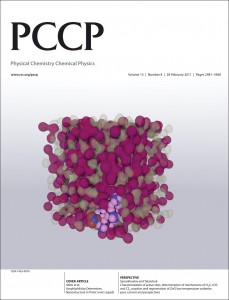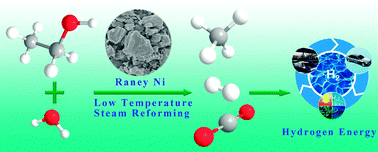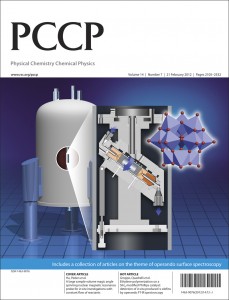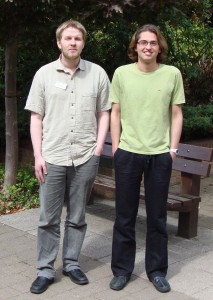This month sees the following articles in PCCP that are in the top ten most accessed in January:
Solar hydrogen production with semiconductor metal oxides: new directions in experiment and theory
Álvaro Valdés , Jeremie Brillet , Michael Grätzel , Hildur Gudmundsdóttir , Heine A. Hansen , Hannes Jónsson , Peter Klüpfel , Geert-Jan Kroes , Florian Le Formal , Isabela C. Man , Rafael S. Martins , Jens K. Nørskov , Jan Rossmeisl , Kevin Sivula , Aleksandra Vojvodic and Michael Zäch
Phys. Chem. Chem. Phys., 2012, 14, 49-70
DOI: 10.1039/C1CP23212F
Graphene-based electrochemical energy conversion and storage: fuel cells, supercapacitors and lithium ion batteries
Junbo Hou , Yuyan Shao , Michael W. Ellis , Robert B. Moore and Baolian Yi
Phys. Chem. Chem. Phys., 2011, 13, 15384-15402
DOI: 10.1039/C1CP21915D
On the nature and signatures of the solvated electron in water
B. Abel , U. Buck , A. L. Sobolewski and W. Domcke
Phys. Chem. Chem. Phys., 2012, 14, 22-34
DOI: 10.1039/C1CP21803D
Operando surface spectroscopy?placing catalytic solids at work under the spotlight
C. O. Arean , B. M. Weckhuysen and A. Zecchina
Phys. Chem. Chem. Phys., 2012, 14, 2125-2127
DOI: 10.1039/C2CP90005J
Urine utilisation by microbial fuel cells; energy fuel for the future
Ioannis Ieropoulos , John Greenman and Chris Melhuish
Phys. Chem. Chem. Phys., 2012, 14, 94-98
DOI: 10.1039/C1CP23213D
Insights into electrocatalysis
Alfred B. Anderson
Phys. Chem. Chem. Phys., 2012, 14, 1330-1338
DOI: 10.1039/C2CP23616H
Nanoconfinement effects in energy storage materials
Maximilian Fichtner
Phys. Chem. Chem. Phys., 2011, 13, 21186-21195
DOI: 10.1039/C1CP22547B
The nature of cationic adsorption sites in alkaline zeolites – single, dual and multiple cation sites
P. Nachtigall , M. R. Delgado , D. Nachtigallova and C. O. Arean
Phys. Chem. Chem. Phys., 2012, 14, 1552-1569
DOI: 10.1039/C2CP23237E
Characterization of nanostructured hybrid and organic solar cells by impedance spectroscopy
Francisco Fabregat-Santiago , Germà Garcia-Belmonte , Iván Mora-Seró and Juan Bisquert
Phys. Chem. Chem. Phys., 2011, 13, 9083-9118
DOI: 10.1039/C0CP02249G
Colloidal metal nanoparticles as a component of designed catalyst
Chun-Jiang Jia and Ferdi Schüth
Phys. Chem. Chem. Phys., 2011, 13, 2457-2487
DOI:10.1039/C0CP02680H
Why not take a look at the articles today and blog your thoughts and comments below.
Fancy submitting an article to PCCP? Then why not submit to us today!
















